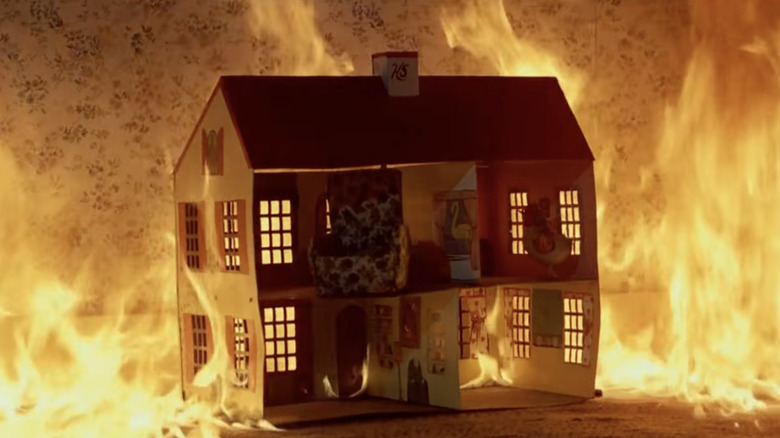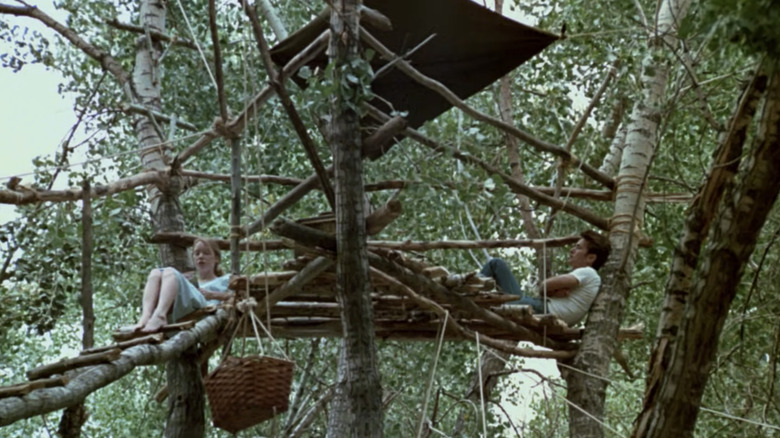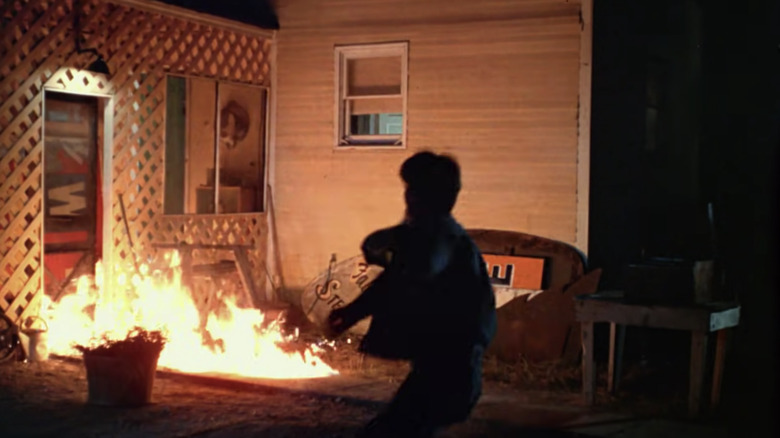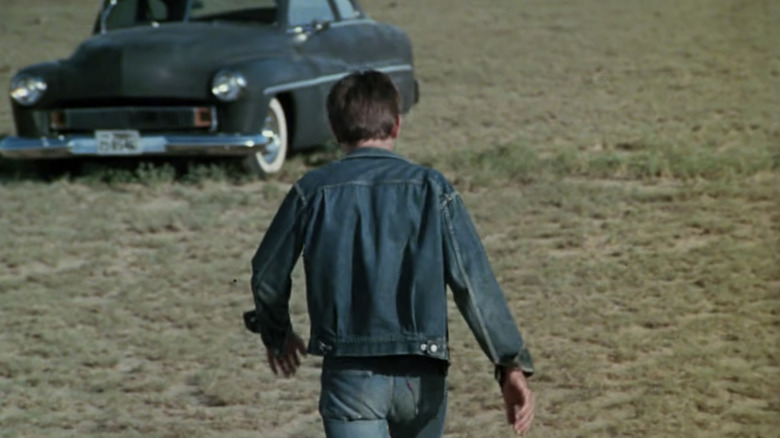An On-Set Fire Wasn't Going To Stop Terrence Malick From Finishing Badlands
There's something about Terrence Malick's "Badlands" that haunts you long after the end credits. The movie might be a neo-noir based on grisly real-life murders, but the grittiness that marked the original genre (and many other films released in the '70s) is replaced with a simple, childlike worldview. How many other movies see their protagonists seek refuge in an elaborate, fantastical treehouse? How many killing sprees are fueled by puppy-dog love? For all its bloodshed and dark undertones, "Badlands" is remarkably light-hearted, largely because it's filtered through the eyes of a misguided, briefly passionate teen.
Surprisingly, the creation of "Badlands" was itself just as passionate — and impossible — as Kit (Martin Sheen) and Holly (Sissy Spacek)'s travels. While the film's protagonists left a trail of blood in their wake only for the young girl to lose interest in her beau, Malick described the process of creating the movie as "painful." And even though "Badlands" was created by fanatics rather than foes, it still put its crew through the wringer: there were never-ending demands, the terrain was rough, and mistakes in stunt prep work led to a fire that endangered the crew's very lives.
Love is blind
Given the movie's simple, fantastical spirit, it's almost fitting that many of the crew members would demonstrate a certain level of childlike hope by agreeing to sign on for free. In an interview with GQ, casting director Dianne Crittenden revealed how she and several other crew members were roped into the project:
"My cousin was working for Terry for free. And I said, 'Why are you doing that?" And she said, "Because he's so nice and the script is so good.' I said, 'No, you've got to ask him for some money.' And she was afraid to do that, so I said, 'Well, I'll talk to him.' I met with him, and he gave me the script, and then I wound up working for free. Because the script was so good. We were all seduced!"
Unfortunately, despite Malick's signature persuasiveness (which would later alter the ending of "Good Will Hunting"), working on "Badlands" was far from romantic — rather, the crew was constantly kept on their toes. Although this would be his first film, Malick was fickle and made unconventional decisions. Tensions bubbled, and things ultimately came to a head as the crew set up the shot where Holly's house burned down.
Tragedy off-screen
Few scenes in "Badlands" are as powerful as the one in which Kit burns Holly's house down. The flames reach epic proportions, spiraling into fire devils as though they are searching for vengeance. And as any proof of Holly's former life — and family — melts into oblivion, an eerie childish tune plays. It's the perfect dramatization of fairy-tale-level catastrophe. Yet the tragedy wasn't just contained to the screen.
Shooting a fire is no easy feat, nor does it have any room for error — a lesson that the crew of "Badlands" learned the hard way. In an interview with GQ, "Badlands" cast and crew members explained that a home marked for on-screen arson would generally be painted with a certain flammable substance. Once the material was completely dry, the house would be relatively safe to light on fire.
Unfortunately, though, a mixup led to Holly's house being lit before the substance had fully dried, resulting in the ignition of flammable vapors. To make matters worse, Billy Weber, the film's associate editor, recalled that "[t]he whole crew was in the room" as the flames spread, leaving each crew member to scramble in order to save their lives — all while a few devoted individuals tried to keep filming. Despite the eventual scene's haunting beauty, the fire itself was disastrous: Roger George, a special effects technician, was in such poor condition that he had to be airlifted to a hospital. Unsurprisingly, the exhausted crew also became all the more hesitant to keep working:
"All the cameras were engulfed and destroyed. The fire strained relationships, and there were lawsuits afterwards. People were wondering if they were gonna get paid, and they started leaving."
Alone in the desert
Unfortunately, the fire made a bad situation worse. Malick had famously raised the funds for "Badlands" personally, but long shooting hours (and a remarkable insistence on capturing every shot in chronological order, no matter how many times the scene would have to be set up) ran through funds. Eventually, the crew members neared their breaking point — and for many, the fire pushed them over the edge.
According to Tony Palmieri, one of the assistant cameramen, by the time "Badlands" was nearing completion, the entire situation was becoming all the more ridiculous. By this point, most of the crew had given up on the movie — nevertheless, Malick still pushed on:
"We were down to maybe five crew members. By this point, Terry's wife was making peanut butter and jelly sandwiches for lunch, and we were shooting spiders in the desert. It was the strangest way of breaking up a film."
Yet once the film was finally complete, Terrence Malick's eccentric behavior paid off. Although "Badlands" was an independently financed debut, it caught Warner Brothers' attention; the studio purchased the film's rights for roughly 3x the cost of production. The movie's success also helped to build its cast and crew's reputations, especially boosting Martin Sheen's popularity and providing a launchpad for Sissy Spacek's career. While the long days in the desert — fire and all — were a massive sacrifice, they ultimately proved to be fruitful.



